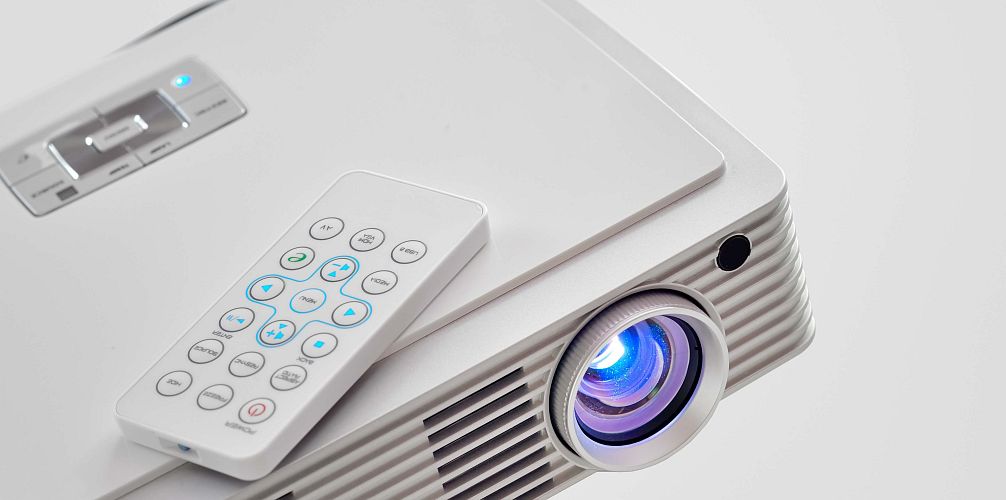
Projectors: How to choose a projector?
A projector is an optical image output device that, using a light source, is capable of projecting an image onto various specialized external surfaces, such as a projection screen. As our company’s long-term practice shows, most users who decide to purchase this device do not have sufficient theoretical knowledge to make the right choice.
Types of Projectors
- Projectors for Business and Education This class of projectors is designed to operate in natural daylight in medium-sized rooms. The main role of such projectors is to create affordable image quality combined with relatively low brightness. Sometimes this class is equated to the class of portable devices.
- Home theater projectors are designed to operate in complete darkness. The exclusion of the cooling system and, as a result, the low brightness of the holy stream inherent in this class of projectors were designed for comfortable viewing of movies in absolute silence. The technologies used in this class are primarily focused on the highest image quality and differ significantly from the technologies used in other classes of projectors.
- Installation projectors are designed for large spaces. The luminous flux of such projectors is significantly higher than the luminous flux of portable devices. This class of projectors is distinguished by broader functionality and more flexible adjustment of geometric distortions for more precise image adjustment, and the ability to replace the lens significantly simplifies the process of choosing an installation location.
Brightness
Brightness is a technical characteristic that determines the power of the luminous flux of the projector. It is measured according to the ANSI system in the brightest mode and on a white screen. It is important that in projectors, unlike other devices for viewing images, this characteristic determines not the brightness of the image on the screen, but the brightness of the output luminous flux emanating from the lens. The reason is that there are many factors in the room that are independent of the projector, such as the image size and the room illumination, which do not allow for more accurate measurements. In order for the projected image to be bright and saturated, the projector brightness must be several times higher than the room illumination level. There are no exact recommendations for calculations, but as practice shows, the higher this coefficient, the clearer and more saturated the image will be. You can measure the brightness of the lighting using a lux meter. For more accurate adjustment of the image brightness, there are several preset modes that allow you to change the level of luminous flux within small limits:
- Dynamic mode The brightest mode, designed for well-lit rooms and a large number of light sources.
- Cinema Warm image mode corresponding to the cinematographic standard D.65, designed for rooms with low or no lighting. In this mode, the luminous flux power will be 40% of the brightness.
- Normal Mode with a uniform image balance, designed for rooms with a standard lighting level.
Color brightness of projectors
What is meant by the term color brightness (Color Light Output) and what are its distinctive features in comparison with the standard brightness of the projector’s luminous flux? In the technical specifications of projectors, manufacturers usually indicate the standard brightness indicators, these parameters determine only the brightness of the projectors when transmitting white color to the screen. It is unlikely that the viewer will want to contemplate only a white screen that does not display any color information. Of course, the color image transmission indicator is more important.
To more accurately determine the capabilities of the projector when projecting color images, it is necessary to look at the color brightness indicators. This characteristic is measured using the same methods and units – lumens, as standard brightness, but not the sum of all three projector colors that produce white, but each color separately – (R) red, (G) green and (B) blue.
In cases where white brightness differs from color brightness, the image displayed on the screen will look duller and less saturated. The best result is achieved with a complete match between the white brightness and color brightness of the projector.






